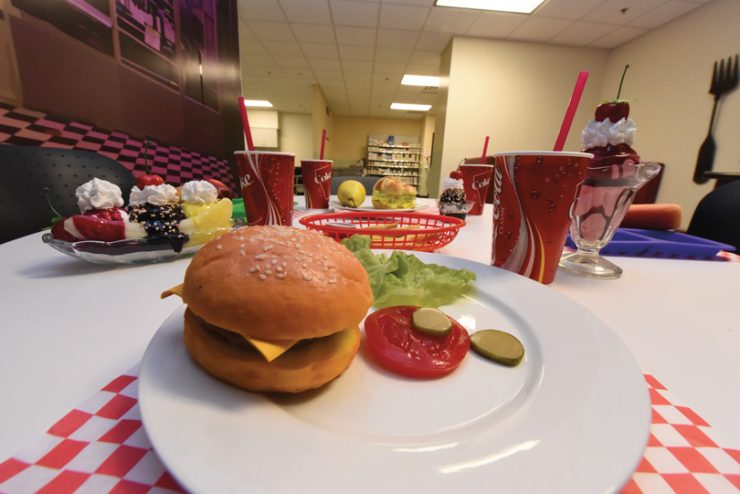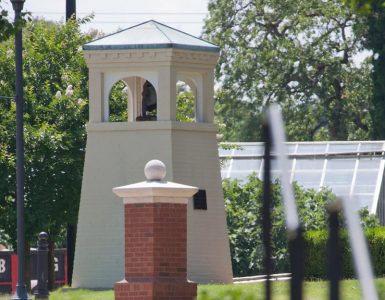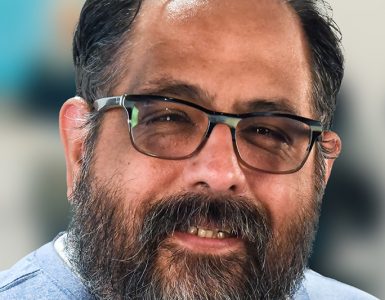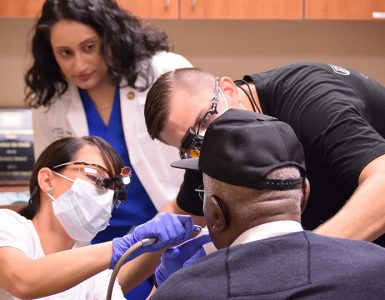Tucked away on the second floor of the Health Sciences Building are a grocery store, a diner and a bank.
These stores aren’t there to make life easier for the many students, faculty and staff who call the Health Sciences Building home, however. They exist to help students learn to make everyday life more manageable for people facing health challenges.
The grocery store, diner and bank are all part of a simulation lab for students in the occupational therapy program.
“As occupational therapists, we’re really interested in helping people to do whatever is meaningful or important for them in their regular life,” said Dr. Pam Kearney, program director and associate professor in the Department of Occupational Therapy. “We work to help people return to occupations or activities that are important to them or help them develop skills they may not have.”
Occupational therapy students use the simulation lab when they’re learning to develop treatment plans or use mobility devices. The simulated diner is especially helpful for teaching someone who uses a wheelchair how to transfer from the wheelchair to a restaurant booth.
Community members volunteer as patients at the simulation lab in order to give students a hands-on learning opportunity.
“Our volunteers may have Parkinson’s, multiple sclerosis or have experienced a stroke,” Kearney said. “Students develop a treatment plan for a particular volunteer and can then role-play with the volunteers in the lab space. It allows students to think about how they would tailor a plan for a person that needs to buy groceries and go to the bank, or for someone who enjoys eating at restaurants.”
Research shows that outcomes can be improved when students engage in experiential learning. This is the central idea behind students’ use of the occupational therapy simulation lab.
“We educate students in that space to teach them how to work with people,” Kearney said. “When we give students opportunities for engagement in a meaningful way and do so in a realistic context, it helps them to see the value of that for their clients.”











